Viewers question breasts & spending in SB LIX ads
3 more health-related commercials scrutinized
Love ‘em or hate ‘em, Super Bowl commercials often draw as much attention as the game itself. Focusing on health care media messages as I do on this site, I’ve already written about one health-related SB LIX commercial - one that the New York Times graded worst of all 64 that aired.
Today I write about two that the NYT graded as 14th and 17th best out of 64.
Drug company Novartis tried to draw “Your Attention, Please” with a barrage of breasts in its commercial.
The agency that produced this commercial wrote:
Our culture is obsessed with women’s breasts. Yet, not when it matters most. In fact, this year 1 in 2 women will skip their annual breast cancer screening.
That simple truth inspired “Your Attention, Please,” with the mission of encouraging more screenings. And what better place to launch a new breast health initiative than at the Super Bowl, where it’s historically been boobs, boobs and more boobs.
So, it’s no surprise this spot was a big win. And for us, creating and developing a movement, from its earliest inception to launching it on the world’s biggest stage, is a personal and professional touchdown.
Publications that write about the ad industry loved the spot.
Mixed reactions sparked exchanges on social media.
That last point resonated with many women who know that tradeoffs* are involved in any screening decision; there is something you may gain but there’s something may you lose. There were many strong voices of intense disapproval from women living with breast cancer.
Kate Crawford was diagnosed with metastatic breast cancer about a dozen years ago. On social media she refers to herself as “Just a mama living with incurable breast cancer.” She took her displeasure with the commercial to Facebook. Watch her video:
All of the following women on social media either have breast cancer or are patient advocates.
“Pfizer is fighting for 8 cancer breakthroughs by 2030” was that drug company’s commercial theme.
Others looked for more from Pfizer than a touching commercial.
A patient advocate who wished to remain anonymous wrote to me:
While it’s certainly a well-made ad, it leans heavily into the usual “warriors” and “fighters” tropes—something that’s feeling increasingly tired to me. I get that it’s the Super Bowl, so it’s the right audience for that kind of messaging, but how much does Pfizer really need to advertise at this point? More importantly, what solutions are they actually pointing people toward?
NYU Langone Medical Center’s commercial did not run nationally, and was one of several local/regional medical center ad buys for the Super Bowl.
A New York City academic medical center is drawing unexpected fire from doctors, patients and others in health care for buying a pricey Super Bowl ad touting its services.
Why it matters: NYU Langone's ad comes amid heightened scrutiny of nonprofit hospitals, which don't pay federal income taxes, and as Americans' frustration with the broader health care system is cresting.
The big picture: "This feels like a terrible idea when healthcare providers are constantly telling Congress that their reimbursements are too low," one health tech entrepreneur posted on his LinkedIn page Sunday. …
Between the lines: NYU Langone is reportedly among blue-state hospitals pulling back on gender-affirming care for kids in order to protect their access to federal funding following President Trump's recent executive order on the topic.
The bottom line: "It's not to say that this specific hospital system is the worst of the worst actors," said Darbin Wofford, senior health policy analyst at center-left think tank Third Way.
But now when hospitals "go to Congress to ask for even more subsidies, hopefully there's a little bit more scrutinization over why they need more money from taxpayers and patients," he told Axios.
And if hospitals want to attract more patients, lowering prices and contracting into more insurance networks is a better way to do that than national advertising, Wofford added.
That same anonymous cancer patient advocate who criticized the Pfizer had eyes on this one as well:
It reinforces the idea of healthcare as a game, with winners and losers—focusing on the “hero” doctors while leaving out nurses, techs, and others who keep the hospital running but often go unrecognized. I get that the ad was meant to be lighthearted, but how much stronger would it have been if it showed the entire team, not just the star players? Feels like a missed opportunity.
Rest assured: there will be no health care ads on this site. Only a reminder that you can leave tips if you wish.
Addenda:
Since at least one reader wished that I had included more about the tradeoff of harms vs. benefits of mammography, I have added this table from the Woloshin & Schwartz paper linked to earlier.
Another article on these ads appeared on the MM+M (Medical Marketing and Media) website on February 24 - Following their flashy Super Bowl ad buys, healthcare and pharma players face pushback.





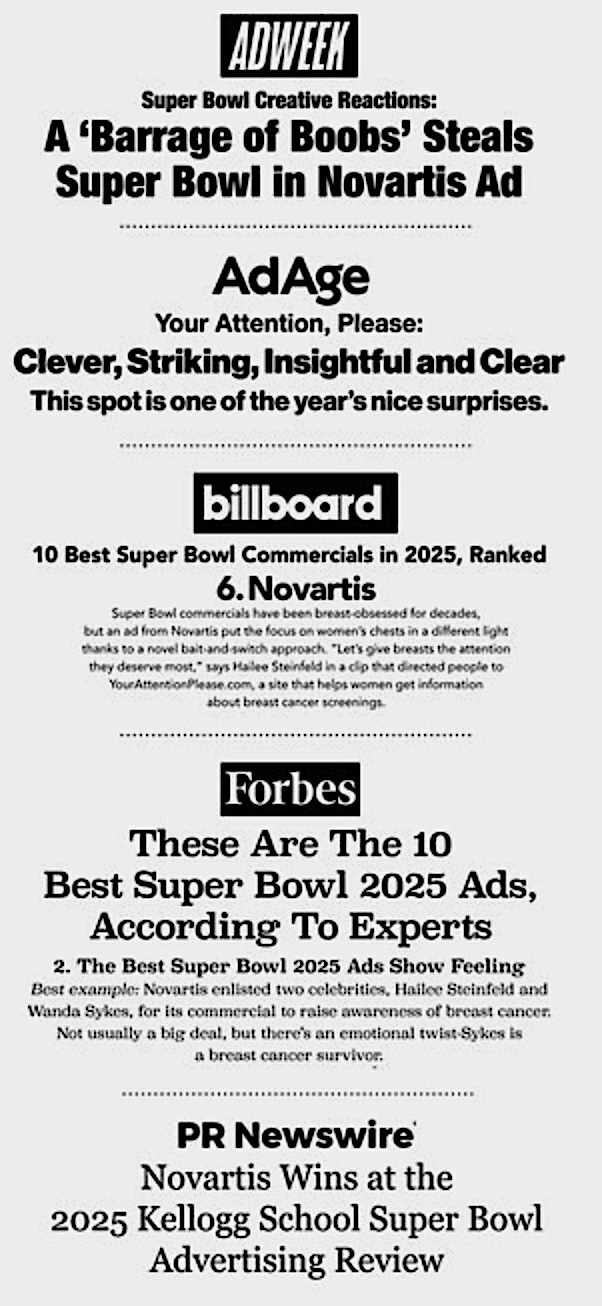
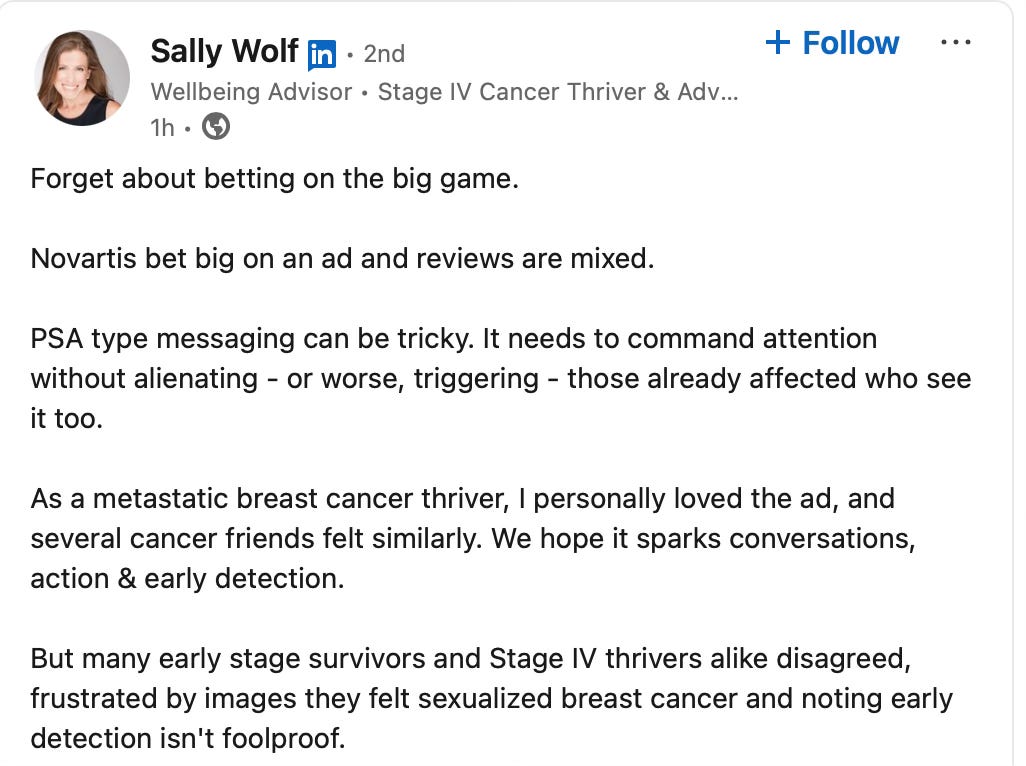







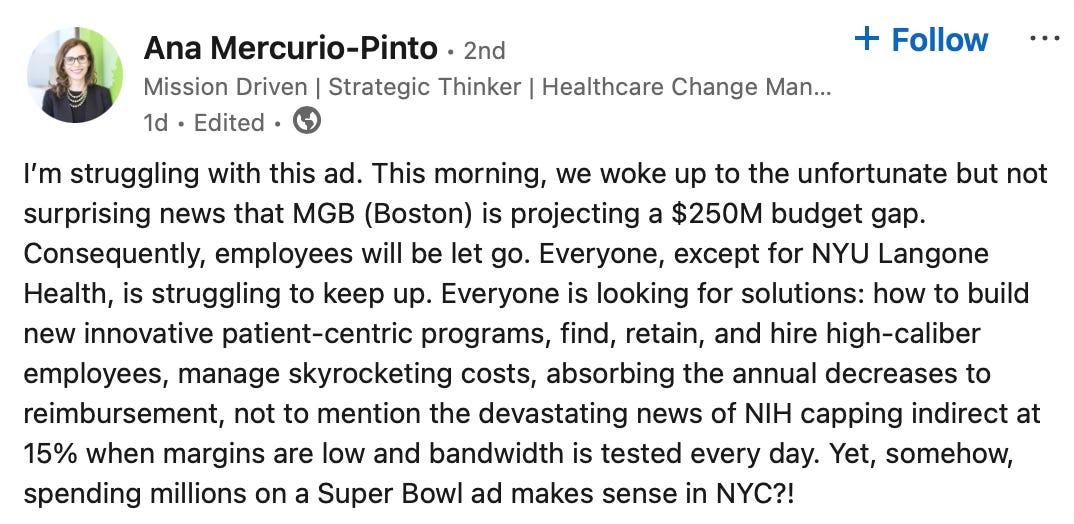
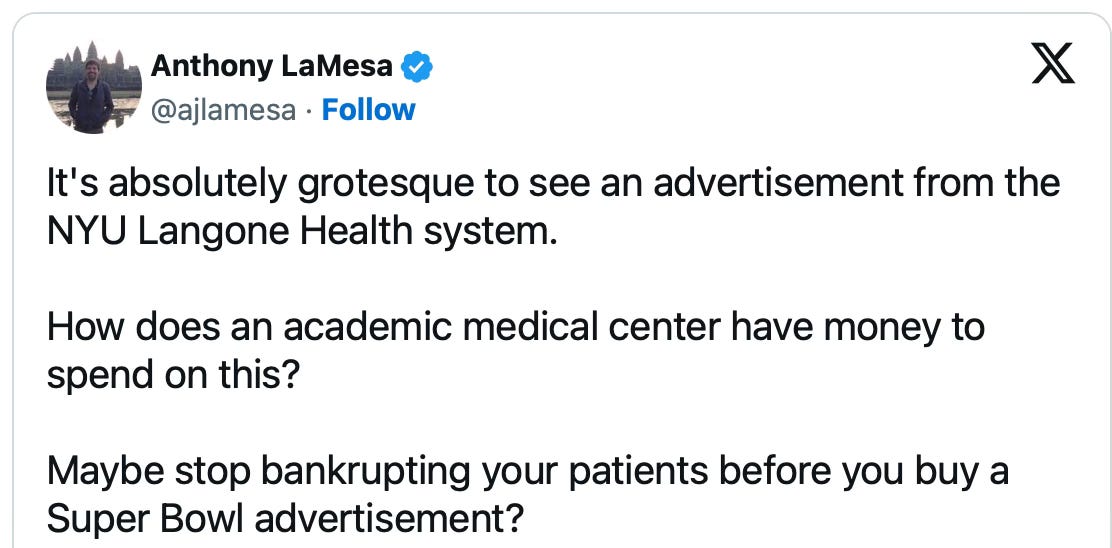
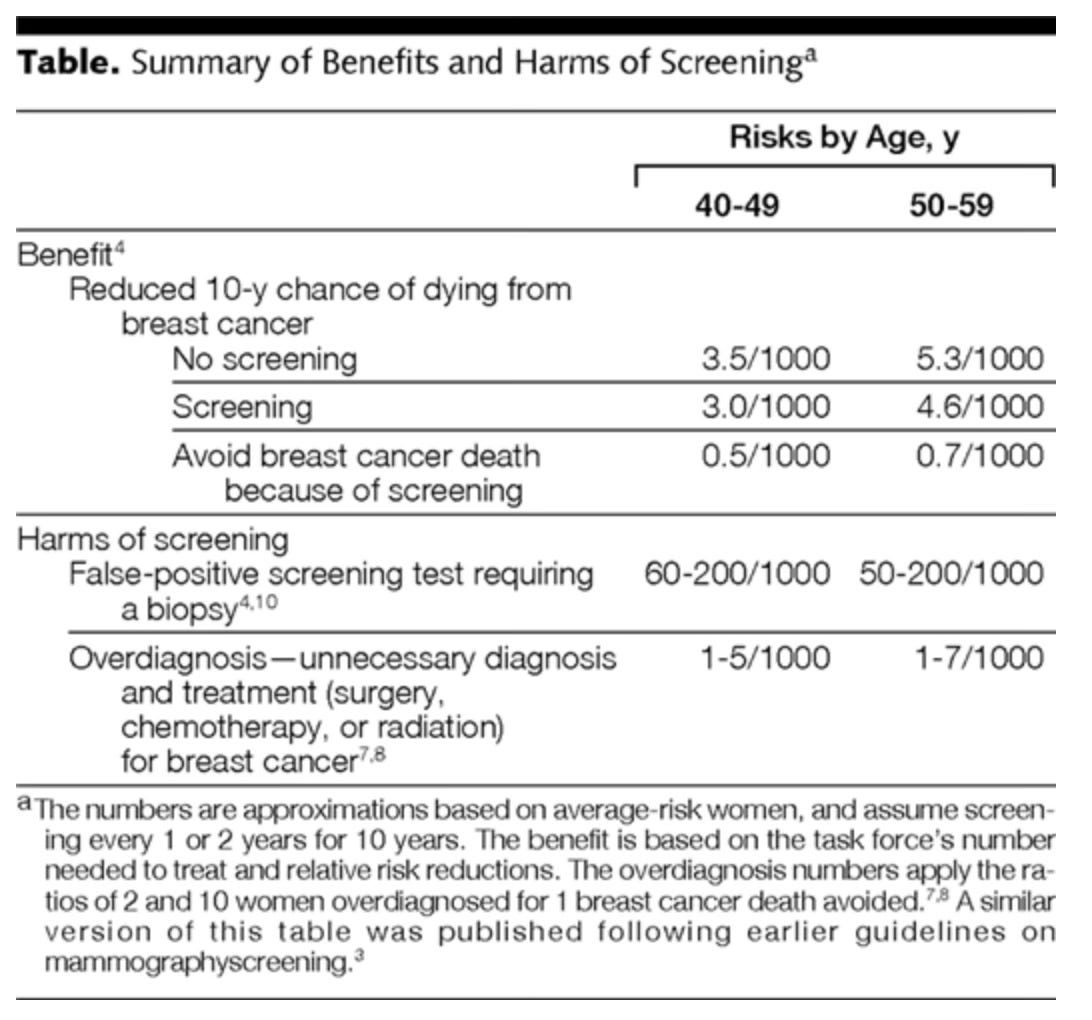
Gary, one of the points you may have overlooked in your commercial critique, is that breast cancer screening is probably the poster child for overdiagnosis (next to prostate cancer) and that there is extremely small yield and much harm in screening for breast cancer in most women who are unlikely to benefit from it. So you might want to also mention that the benefits of routine breast cancer screening are so paltry that a number of countries have dispensed with it altogether. Not in the US, of course, where there is much money to be made. Other health systems recognize the low yield and put their health care dollars in other areas.